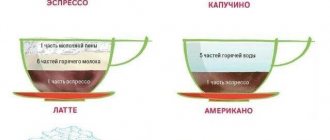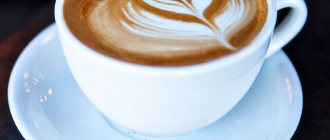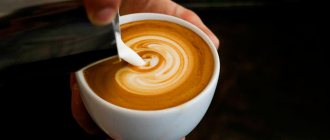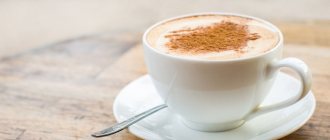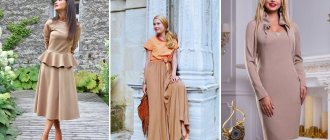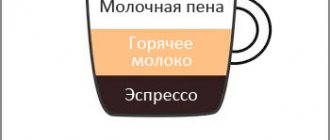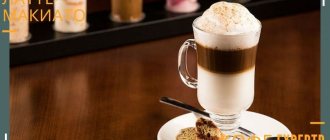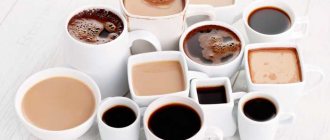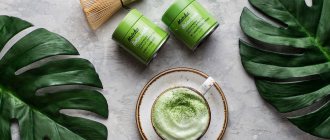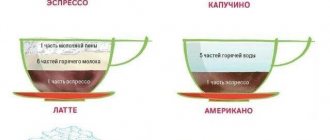A cup of coffee with a pattern on milk foam is a signature feature of many coffee shops and cafes. For the establishment, this is a way to attract new visitors; for the barista, it is an opportunity to show their imagination and creativity.
Doing something like this at home for someone who has not undergone special training and does not have the same technical capabilities as a professional barista is not easy, but you have to try.
If successful, you will present your loved one not just “coffee in bed” (although this is already great), but confirmation of sincere feelings, if it is, for example, a cup with the inscription “I love you” on the foam or a drawing of a heart.
By the way, we talked about who a barista is in a separate article.
Latte art - what is it?
The art of painting on coffee is called “Latte Art”. The authors of the original idea are considered to be Italian blacksmith monks , but this is rarely remembered today - the creation of patterns and inscriptions on coffee foam is done all over the world. Sometimes they limit themselves to simple images of a flower or an apple, sometimes they surprise you with true works of art. Alas, short-lived, it is, meanwhile, in constant development.
On the Internet, for example, you can find photos in which the drawing is colored, it is made using special food dyes.
And some cafes offer this service: a visitor from his smartphone uploads his own photo to a special terminal, which is transferred to the coffee machine, and this smart technology reproduces the portrait with edible paints: compare, photograph, and drink, of course.
A Taiwanese barista named Kuai Fan Chang has gone further than many - she makes 3D drawings. The subject matter, of course, is “on the edge”: spiders, centipedes, cockroaches. Moreover, the design is so believable that not everyone will dare to put a cup with such a topping to their lips, so the barista also offers cuter options, which feature adorable animals: a cat, a turtle, a dog, a bear. Each “beast” takes an average of 15 minutes to make.
But who is the coolest barista is determined by international latte art championships. One of them was won by Scotty Kalaghan from Australia - he made identical beautiful drawings in six cups, working... blindly, behind his back.
3D drawings on coffee from Kuai Fan Chang
1 of 11
Introduction
Today it is difficult to imagine a cappuccino or latte without a design, even the simplest and most uncomplicated one. It has become a matter of principle for baristas around the world to learn how to pour frothed milk into espresso in a way that turns a cup of delicious drink into a work of art. Thanks to training centers and courses, latte art has taken a separate place in the coffee industry. Annual championships make this trend more and more popular, raising the barista’s quality of work and skill to a new level.
What kind of coffee can you draw on?
For drawing, use strong, thick coffee - cappuccino or espresso, prepared according to all the rules in a coffee machine. A latte will also be suitable for this purpose, only in this case dark (for example, chocolate) patterns will be applied to the white background of the drink, rather than milk patterns on top of the dark-colored espresso. You can find latte coffee recipes in this article.
The instructions for beginning artists emphasize that the main component of success is good milk foam , which is used to apply the drawing.
However, your own coffee foam is also extremely important - in a well-prepared drink, it lasts for a long time, giving the master the opportunity to create. Sometimes this foam is sprinkled with cocoa powder, and this adds additional beige shades to the traditional coffee color scheme. Information about the benefits and harms of cocoa powder can be found here. Read the following article to learn how to properly froth milk for cappuccino.
Varieties of coffee art
Coffee painting is developing in several directions:
- pitching – to decorate the drink, a milk frothing vessel called a “pitcher” is used;
- etching - a design is created using foamed milk, and the artist’s tool is a pointed object;
- cappuccino art - in addition to milk, safe edible dyes are used here;
- multi-art – is a combination of etching and cappuccino art techniques;
- espresso art - the “canvas” for applying patterns is the so-called “cream” - the foam on the surface of the espresso.
Recipes for making espresso coffee at home can be found here.
You can make a drawing using different types of techniques. One of them is called stencil and is more suitable for beginners , since the pattern or inscription is already cut out on a special plate, which greatly simplifies the task of the coffee artist. The second is 3D technology. It’s not hard to guess what it is: realistic, three-dimensional (they can be viewed from different angles) images are the pinnacle of latte art.
By the way, lately this technology has ceased to be the preserve of a select few. A unique Ripple Maker machine has been created, which literally in seconds reproduces drawings and inscriptions from the customer’s smartphone onto coffee foam. The maximum dimensions of the original (text, photograph, including selfies) are 180 x 95 mm.
Read about what raff coffee is, its history and various recipes at the link.
Do you know the difference between a coffee maker and a coffee machine? Find the answer here.
About grain for latte art
— Dark roasting and a mixture with robusta produce a dense, rich crema. This allows you to get a bright contrasting pattern. Is this the only coffee suitable for latte art?
— Yes, for latte art, to create masterpieces on the surface of the drink, to take a beautiful photo, dark roasted grain is used. Even at the World Cup, taste was neglected in favor of dark roast beans. There is a slight justification for this: the championship adapts to global trends, and the leaders of the latte art movement are Asian countries where dark roasting is accepted and they like contrasting designs. But I don't support this approach. This is not a specialty taste.
— What coffee roasting do you use in your coffee shops?
“I use light roasted grain, so it’s tasty as an alternative.” This is a proprietary blend of Brazil and Colombia without pronounced acidity, otherwise the grain may “bubble” the cappuccino.
— Did I understand correctly that espresso mixtures with acidic African varieties are not suitable for full-fledged latte art?
— Yes, with this espresso the milk just curdles. Therefore, if we talk about the classic barista championship, then one of the tasks of the participant is to leave acidity in the espresso, but not allow the grain to spoil the milk drink.
For acidic varieties without a chocolate-nut profile, the heating temperature of the milk should be lower. Otherwise, the taste of the grain itself will be lost. Therefore, baristas often use small cups for milk drinks at championships. For juicy berry espresso, a flat white is better suited.
— To what temperature do you usually heat milk?
— I didn’t measure. Our standard in a coffee shop is a cappuccino that is as hot as possible, but does not burn your tongue. It's about 80 degrees. We use MightyMilk, a fairly rich milk that performs well at high temperatures.
How to make drawings on coffee
Whatever drawing technique the master chooses, the first thing he does is prepare an invigorating, high-quality espresso or cappuccino in a coffee machine. The drink is poured into a cup or glass (as you like) and sprinkled with chocolate, cocoa powder or cinnamon on top. Thanks to these ingredients, the drawing will turn out to be especially interesting and expressive.
Then milk foam is prepared. Cream (30 percent fat content) or milk (fat content percentage of at least 3-3.5) is best suited for this purpose. The foam preparation technology involves the use of a chilled product , which is then heated to the required temperature and at the same time whipped under pressure.
The whipping process, according to experts, should not be too long, because its goal is to achieve a slight thickening of the product . To simplify the task, in addition to coffee machines, a special jug for milk (pitcher) is provided; use it like this:
- fill the pitcher with milk just below the base of its spout;
- the steam tap of the coffee machine is lowered into the pitcher so that the holes in the tip are a centimeter and a half below the milk level;
- the steam tap of the coffee machine is opened;
- the milk will increase in volume, therefore, in order to maintain a distance of one and a half centimeters, the tip of the tap will also need to be raised up, the duration of whipping in different coffee machines is from 5 to 15 seconds;
- the same amount of time will be required for the procedure called steaming milk - the tip is immersed deep into the pitcher, and 1-1.5 cm now separates it from the bottom, and not from the surface (the jug will have to be slightly tilted so that vortex processes occur in it more actively);
- in 5-15 minutes. the steam tap is closed, the milk at this point warms up to a temperature of 65-70 degrees;
- You can start drawing patterns on the coffee surface using the pitcher’s nose as a “pencil.”
For a beginner, this will be quite difficult to do, but experienced baristas are able to achieve the desired result in different ways:
- placing the pitcher at different heights from the cup (thus changing the strength of the jet);
- adjusting the speed of the jet;
- selecting various points on the coffee surface and directing the jet at them.
To apply patterns, various thin and sharp sticks such as toothpicks are used. They are lowered into the coffee to the required depth, and then lifted, grabbing a little coffee and bringing it to a snow-white surface, and a light dark touch, geometric lines, zigzags, ovals, flowers are applied to it.
To create original coffee pictures, a pastry syringe with a thin nozzle is also suitable; it is filled with liquid chocolate or thick syrup (caramel, strawberry, chocolate) and patterns are created directly on top of the milk foam.
If you don’t get the perfect picture, it’s better to start by mastering a simpler method of drawing - using a stencil, buying a ready-made one, or cutting it out yourself from cardboard. The stencils should be slightly wider in diameter than the cup or mug, but the design should not extend beyond its limits.
If you are making your own stencil, try not to make the slits too thick - this will make the image look more elegant. The stencil is placed over a cup, the surface of which is covered with milk foam, and grated chocolate, cinnamon, and ground nuts are poured onto it. On the dark surface of the espresso it will be interesting to look at an image made of powdered sugar - for example, a swan, a bunny, a deer.
Technique for creating patterns and images
Latte art, as if on three pillars, stands on three basic design elements, these are:
- heart;
- apple;
- rosetta (rose).
It is imperative to learn how to perform these particular drawings, then other, more complex ones will be easier, because they, as a rule, are a kind of combination of basic techniques, multiplied by the imagination of the performer. Here's how it's done.
Heart: mentally draw a circle on the surface of the coffee and fill it with milk through the spout of the pitcher (it should be directed to the center of the circle), at the final stage the pitcher is raised, the stream is made very thin and the diameter of the circle filled with milk is crossed out with it.
Apple: they begin to draw it from the wall of the cup, depicting a small twig, and then, directing a stream of milk into the center of the cup, they create the fruit itself.
Flower (rosetta): the surface is mentally divided into 4 sectors and first the two upper “quarters” are filled, then, shaking the pinscher slightly, the lower left and lower right are filled, the last portions of milk are poured out in a zigzag motion. They complete the work, as in the case of the heart, by lifting the pitcher and crossing out the picture with a thin stream.
Tulip: this image is based on several hearts, which are crossed by a milky stripe “stem”.
The following video will help you consolidate your skills:
Milk foam and barista skill
At the dawn of the art of painting on coffee, coffee bartenders made do with a minimum of available materials. To amuse customers, they came up with the idea of leaving a small “compliment” on the surface of the foam: a simple cream pattern in the shape of a heart or an apple, sprinkled with aromatic cinnamon. Soon the figures became more and more complex, experiments resulted in the current direction - latte art.
Video on the topic
3D latte art
Click Play to view
Nowadays you won’t surprise anyone with coffee drawing championships. There, real works of art are created, new application technologies are invented, aerobatics and virtuoso performance are demonstrated.
Skill plays a huge role in the latte art technique. But the main components are required:
- the highest quality espresso, prepared in compliance with all rules;
- fresh milk of the required fat content and temperature.
They serve as both canvas and paint, and the brush is a stream of whipped milk or a pointed stick. The decorations are built using chocolate or fruit syrup, chocolate chips, cinnamon powder, and natural cocoa.
The barista uses a sharp object to perfect the drawing.
What kind of coffee foam do you need to make a drawing at home?
Pessimists claim that without professional equipment it is impossible to draw patterns on coffee. Optimists try and succeed. The goal is to prepare a foam of such density that it retains the pattern for a quarter of an hour. To do this, the foam must consist of tiny bubbles. If they are large, the mass will be loose and will settle very quickly, dissolving in the drink along with the pattern.
You can obtain foam of the desired density using:
- hand mixer (you should whip the cream while heating it to 70 degrees);
- manual cappuccino maker (it will cope with the task faster).
In any case, the coffee must be brewed in advance, because the milk foam will not wait, it must be put to work immediately.
You can learn about the beneficial properties and contraindications of rooibos tea in our material.
We wrote about the properties: benefits and harms of decaffeinated coffee here.
We wrote about the organization, menu options and what a coffee break is here:
Secrets and recommendations
In an art like latte art, not all baristas are willing to divulge their deepest secrets. But even if they share them, beginners have to train for a very long time in order to reproduce the “handwriting” of the master. Here are some recommendations that may be useful:
- to direct the image in the desired direction, the line-jet is drawn with a sharp, fast movement;
- the heart design performs not only a decorative, but also a taste function - the foam flows from the center to the edge of the cup, enhancing the aroma of each sip;
- to make multi-colored designs, you can use syrups with a little starch added for thickness;
- be sure to heat the cup so that the coffee and milk foam poured into it stay hot longer;
- If you need to add sugar to your coffee, it is better to sprinkle it on the foam; if you need to add rum or cognac, pour it directly into the coffee.
About learning latte art
— How to learn latte art?
— First, the barista learns to pour milk, creating basic designs: hearts, rosettes and tulips. This is not latte art, these are standard skills. I am only interested in teaching those who have mastered the technique of frothing milk and already know how to create basic designs.
Everything comes only with daily practice, and the speed of learning depends on the talent of the barista. Some take two weeks to create basic drawings, while others need a couple of months. Although I believe that you should not rush into this - it is important to practice, draw conclusions and improve a little every day. I don't set a goal for my baristas to learn how to draw within two weeks. They first work as trainees, salespeople, and at the same time train for one or two months to gain confidence.
— How long did it take you to master latte art skills?
- I was lucky in this regard. When I started working as a barista in Samara, I found a professional trainer. We spent a week learning how to make basic drawings, and then I honed my skills by pouring water into a cup. The drawing itself was not visible, but the hands remembered the movements. It took me two months. Then I started coming up with more complex designs.
